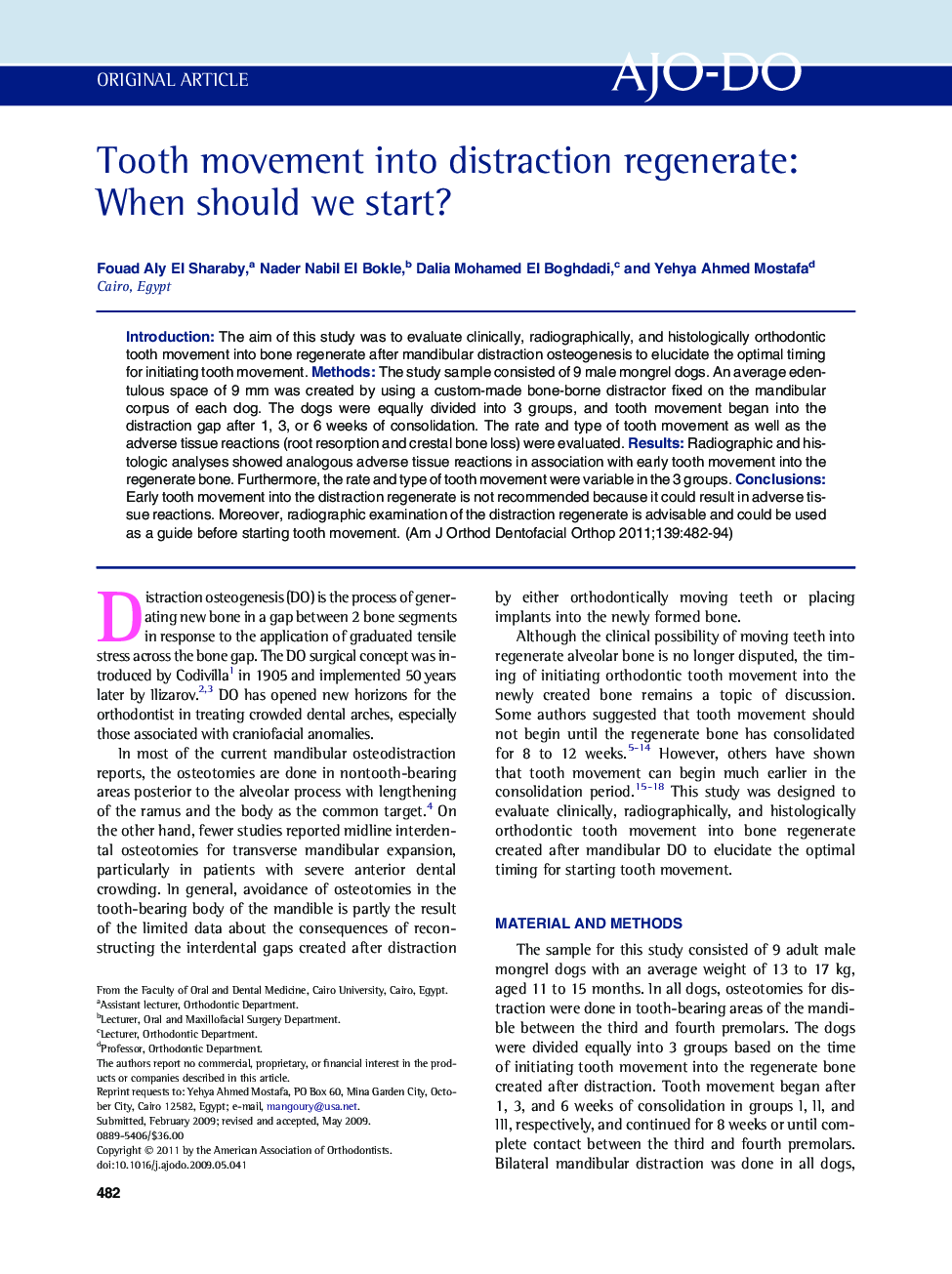| Article ID | Journal | Published Year | Pages | File Type |
|---|---|---|---|---|
| 3117704 | American Journal of Orthodontics and Dentofacial Orthopedics | 2011 | 13 Pages |
IntroductionThe aim of this study was to evaluate clinically, radiographically, and histologically orthodontic tooth movement into bone regenerate after mandibular distraction osteogenesis to elucidate the optimal timing for initiating tooth movement.MethodsThe study sample consisted of 9 male mongrel dogs. An average edentulous space of 9 mm was created by using a custom-made bone-borne distractor fixed on the mandibular corpus of each dog. The dogs were equally divided into 3 groups, and tooth movement began into the distraction gap after 1, 3, or 6 weeks of consolidation. The rate and type of tooth movement as well as the adverse tissue reactions (root resorption and crestal bone loss) were evaluated.ResultsRadiographic and histologic analyses showed analogous adverse tissue reactions in association with early tooth movement into the regenerate bone. Furthermore, the rate and type of tooth movement were variable in the 3 groups.ConclusionsEarly tooth movement into the distraction regenerate is not recommended because it could result in adverse tissue reactions. Moreover, radiographic examination of the distraction regenerate is advisable and could be used as a guide before starting tooth movement.
